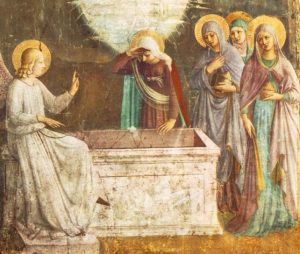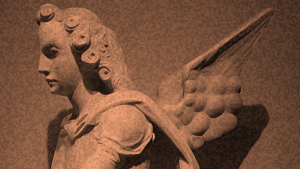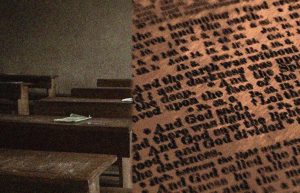 A recent article in The Paris Review caught my attention. Cody Delistraty describes his visit to a convent/museum on the Piazza San Marco in Florence, Italy that houses a collection of Fra Angelico frescos: Fra Angelico’s Divine Emotion
A recent article in The Paris Review caught my attention. Cody Delistraty describes his visit to a convent/museum on the Piazza San Marco in Florence, Italy that houses a collection of Fra Angelico frescos: Fra Angelico’s Divine Emotion
These paintings, by the proto-Renaissance painter, Fra Angelico, adorn the rooms of what were once monastic cells. Not a bad perk for those who took the vows.
What impressed me most is the way the author describes the experience of seeing these timeless works of art. This is not a tourist’s checklist of things to see in Florence, with selfies.
A kind of pilgrimage
Delistraty recalls a visit in 1873 by famed American author Henry James, who had been captivated and transported by seeing these works. He also admits that his own recent visit was not motivated entirely by art appreciation. He was motivated by a desire to reconnect emotionally with a “special” person who had also visited this museum on her own some time earlier. His references to Henry James’s descriptions of the experience, and his own emotional readiness to see and experience this art in this place, is captivating.
Sacred art
This is sacred art. It’s found in a sacred place (a former monastery/convent) and concerns sacred subjects. The frescoes deal with key events of the life of Jesus as the Christ. This is art that is able to arrest and transport both believer’s and those less ready to believe in unexpected and profound ways.
Why doesn’t reading the Bible aloud in church inspire the same emotional response and move listening audiences to the same degree? Surely the narratives and language of the Bible on which these painting are based are as great if not greater achievements in art. And yet, our weekly “lessons” from the Bible, as read aloud in church, are often mechanical and dull. Rarely do these readings excite a passionate response like this on the part of the reader or listeners.
Hear the words of Henry James
The language that the author(s) uses to describe the effect of these works of art on the observer is so compelling that I have to quote liberally from the article. Begin with the idea that these works of art have an immediate and direct effect on the observer.
Imagine if we could say of a public reading of scripture what Henry James says when he encounters and contemplates the works of Fra Angelico, face-to-face in real time and space. Henry James describes such works as yearning views of the Christian story that seem to admonish the observer to allow the story to “work its utmost will on you.”
The work of the painter calls you to surrender yourself to its art. The observer becomes a participant in the experience portrayed in the painting simply by closely observing and giving yourself over to the art. That’s what we should experience when we encounter scripture. The typical reading of scripture in church, however, is tightly controlled and summarily dispatched as quickly and efficiently as possible.
Hear the words of the author
In contrast, the author describes the works of Fra Angelico as “so emotionally stunning that one almost freezes in front of them, as if being whisked away to another world in which there is only faith, in which there is a single, abiding truth.”
Shouldn’t we long to hear and feel that same way when listening to the Bible being read aloud? The narratives of the Bible are more than capable of achieving what the works of the Florentine master do when they, in the word of the author, “capture not just a scene but the feelings of that scene.” And yet, too often as readers we ignore the emotion of a scene. Our readings are technical and respectful, but unemotional.
Empathic experience
The effect of the paintings, again described by the author, is “the transmission of emotions from the mind of the artist to the mind of the viewer.” A painting, “invites the viewer to mentally place himself within the situation,” and “provide[s] the space for the viewer to put himself in the minds of the characters.” Wow.
This is exactly what we want from a public reading of the Gospels. As readers, we want to be the catalyst for an empathic experience. This is not just to bring us closer to the people we encounter in the Bible, but to draw us closer to the divine. The author notes that the strategic placing of divine figures into scenes populated by humans, affords us the beginnings of insight into the emotions of the divine.
We encounter the empathy that Jesus experienced for mankind and his compassionate response.
Transcendent experience
The author references the critic, John Ruskin who called the work of Fra Angelico “visions” rather than mere works of art.
There is something transcendent about both this art and the art of the Bible. They reach out and pull us beyond ourselves. I think that referencing the “art” of the Bible in no way diminishes its sacred and transcendent power. The paper, ink and font that are used to print a Bible do nothing to diminish its authority. They glorify the Bible when they’re chosen and applied artfully. This is even more true for the narrative structures and language choices in the text. They are by design.
I come back to the experience of seeing this art, “as if being whisked away to another world in which there is only faith.” Great art has the power to literally transport us. And in that realm, “The barrier between religious belief and the shock of beauty is the thinnest line.” Beautifully put.
Hear the Gospel, experience the Gospel
Have you found the reading of the Gospel aloud in church to be more often than not simply dutiful? Most readers simply present the “lesson” as fodder for the sermon to expound upon immediately following.
Again, hear the author: “To look at a painting by Fra Angelico is to feel your own faith unfold.” Why can’t we say this more often about hearing the Gospel read aloud? To read and hear the Bible read aloud is to “feel your own faith unfold”! Wouldn’t that be an experience?
If we could only begin to read scripture aloud with the same energy and passion that the works of Fra Angelico were able to excite in this author and those who ducked their heads before him into those small monastery cells. Would a transformation await us all?

